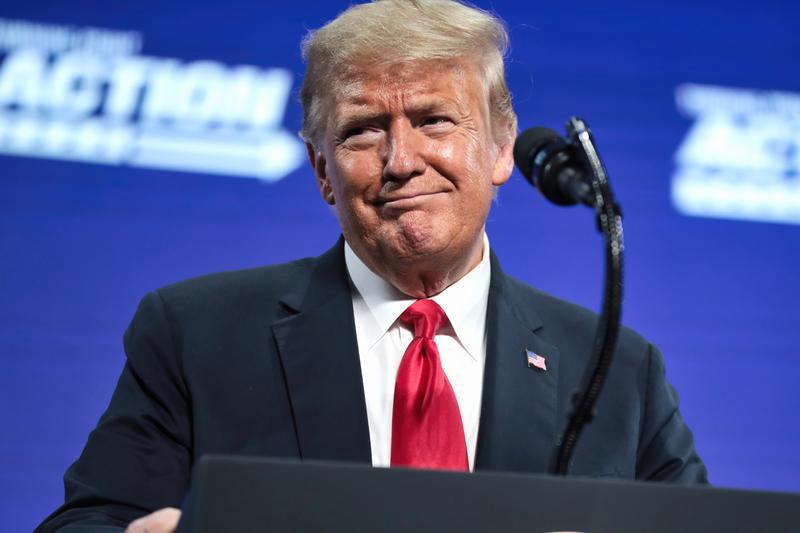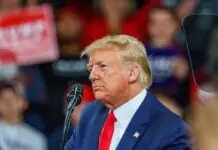The White House has directed the U.S. military to formulate various strategies concerning the Panama Canal, including the potential use of force to control the crucial maritime route, according to a report issued on Thursday.
This instruction follows President Donald Trump’s announcement to Congress about plans to take over the 50-mile canal to “further enhance our national security.” He stated, “My administration will be reclaiming the Panama Canal, and we’ve already started doing it.” The military is evaluating options from maintaining safe passage for U.S. vessels to potentially re-establishing full U.S. control of the waterway, initially built by the U.S. in the early 20th century and handed over to Panama in the 1970s.
Unnamed officials informed NBC News that while deploying troops to seize the canal is a “less likely” scenario, it remains under consideration. The level of collaboration with the Panamanian military will be crucial in determining the necessity of military action.
Panama’s officials have asserted that “Our sovereignty over the Panama Canal is absolute and not the basis of any negotiation.”
The Trump administration’s focus on the canal is driven by concerns over Chinese influence in the region. President Trump has alleged that Chinese troops are “controlling” the canal and that Panama is overcharging the U.S. for its use. Both Panama and China have refuted these claims.
Panamanian President José Raúl Mulino has dismissed Trump’s allegations as “nonsense” and rejected any idea of surrendering control of the canal. “It’s impossible. I can’t negotiate,” Mulino stated in January regarding the canal’s control. “That is done. The canal belongs to Panama.”
The military is contemplating several strategies, such as securing existing ports in Panama, constructing new ports, or deploying the Army Corps of Engineers to manage the canal’s locks. Additionally, there are discussions about establishing Army Jungle Schools or training camps akin to those that existed in Panama prior to the canal’s official transfer.
The White House believes stationing U.S. troops in Panama could mitigate China’s regional influence. In case of a regional conflict, these forces might prevent Chinese vessels from accessing the waterway. The U.S. currently has over 200 troops in Panama, including Special Forces units collaborating with Panamanian security forces.
Secretary of Defense Pete Hegseth is anticipated to visit Panama next month to discuss the possibility of increasing the U.S. military presence in the canal zone. The administration maintains that the U.S. has the right to ensure navigation through the Panama Canal, a critical passage for global trade.
Panama’s constitution enshrines the canal’s neutrality. A treaty between the U.S. and Panama mandates the defense of the canal against threats to its neutrality, allowing each nation to take unilateral action if necessary.
Despite being the canal’s second-largest user, there is no evidence that the Chinese government controls or operates it. The canal is managed by the Panama Canal Authority, a Panamanian government agency. However, Chinese companies have invested heavily in ports and infrastructure near the canal, raising concerns among some U.S. officials about China’s growing regional influence.
CK Hutchison Holdings, a Hong Kong-based conglomerate, has long held a concession to operate major port terminals at the canal’s Atlantic and Pacific entrances. This arrangement, involving a Chinese-linked company managing cargo handling at these ports, has been viewed as a strategic concern by some U.S. officials. However, Panama emphasizes that such commercial operations are separate from controlling canal traffic or tolls. Panama and China deny any Chinese operational control over the canal.
As Reuters reports, “There is no evidence to support” Trump’s claim of Chinese control. While Chinese investments are significant, they do not equate to running the canal.
Most vessels using the canal either head to or come from the United States. A blockade or disruption would force ships traveling between the Atlantic and Pacific oceans to navigate around South America, significantly increasing time and costs for global shipping.
Last month, Secretary of State Marco Rubio visited the canal and claimed to have arranged for U.S. ships to pass through without fees. However, Mulino promptly denied this claim, and Rubio later clarified that these were his “expectations” rather than an actual agreement.
Historically, the small Central American nation has been a staunch U.S. ally since former President Theodore Roosevelt recognized its independence in 1903. The current tensions mark a significant departure from the previously positive relationship between the two countries.
Any military action to seize the canal would likely violate international law and could harm U.S. relations with both Panama and other regional nations.
Multiple reputable outlets have confirmed that U.S. officials told Reuters that an interim national security directive called on the Pentagon to ensure “full access” to the canal and consider military options to safeguard it. SOUTHCOM has crafted options ranging from closer collaboration with Panama’s security forces to the less likely scenario of U.S. troops seizing the canal. Admiral Alvin Holsey, the SOUTHCOM commander, has presented draft strategies to Defense Secretary Hegseth.
The Panama Canal was fully turned over to Panama at the end of 1999, with Panama assuming complete sovereignty over it. However, the treaties also include the Panama Canal Neutrality Treaty, ensuring the canal remains neutral and open to ships of all nations.
U.S. officials sometimes cite this treaty to justify a potential role in safeguarding the canal. However, the treaty explicitly does not grant the U.S. the right to interfere in Panama’s internal affairs or permanently station troops to run the canal. A provision known as the DeConcini Reservation clarifies that while the U.S. can defend the canal’s neutrality unilaterally, it cannot undermine Panama’s sovereignty or territorial integrity.
Any U.S. military action is permissible only to counter threats to the canal, not to claim ownership. An attempt to invade Panama to “take back” control of the canal without a neutrality threat would likely violate international law and treaty terms.
Legal experts and U.S. allies recognize that such an action would breach Panama’s sovereignty and the UN Charter. Any attempt by a foreign power, including the U.S., to seize the canal by force would be illegal and not sanctioned by the treaties.
The Panama Canal’s strategic importance has long drawn international attention.











